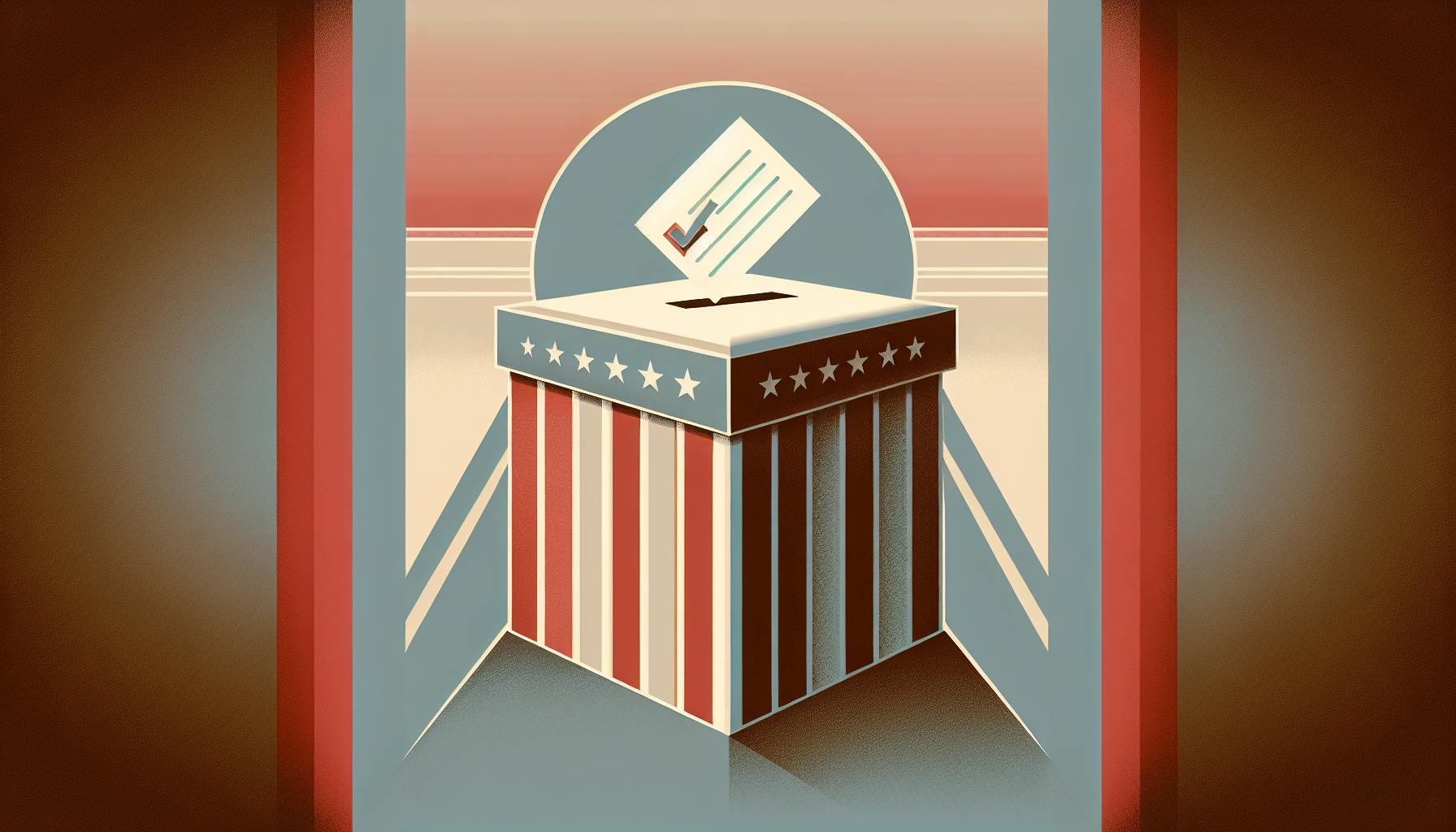Most can agree that misconduct and bias in high-profile cases can have severe consequences.
This article explores how the Duke lacrosse scandal of 2006 resulted from prosecutorial and media misconduct, leading to falsely accused students and social turmoil.
We'll examine the sexual assault allegations, the DA's unethical actions, the media's rush to judgement, and the aftermath - highlighting vital lessons on due process, ethical standards, and objective reporting.
Introduction to the Duke Lacrosse Case
The Duke lacrosse case refers to the events surrounding allegations made in 2006 by an exotic dancer that she was sexually assaulted at a party hosted by members of the Duke University men's lacrosse team. The case brought intense media scrutiny and raised difficult questions about racism, sexual violence, media bias, and due process.
The Infamous Spring Break Party and Allegations
On March 13, 2006, members of the Duke men's lacrosse team hosted a spring break party and hired two exotic dancers. Later that night, one of the dancers, Crystal Mangum, claimed she was sexually assaulted in a bathroom by three white members of the team. The allegations sparked immediate reactions on campus and in the community.
Profiles of the Accused: Collin Finnerty, Reade Seligmann, and David Evans
The three lacrosse players accused were Collin Finnerty, Reade Seligmann, and team captain David Evans. All three strongly denied the allegations and provided alibis confirming they were not present at the location of the alleged assault at the time it occurred.
Immediate Reactions from Duke University and Durham Community
The community quickly divided along racial lines. Many questioned whether wealthy, white college students could receive fair treatment in a case involving a poor, African American woman. Duke University suspended the lacrosse team's season and coach Mike Pressler resigned. District Attorney Mike Nifong made over 70 media appearances, vowing to bring justice.
What happened in the Duke lacrosse scandal?
The Duke lacrosse case refers to a widely reported 2006 criminal case in Durham, North Carolina involving members of the Duke University men's lacrosse team. Three team members were falsely accused of rape by an exotic dancer named Crystal Mangum, who had been hired to perform at a team party in March 2006.
The allegations and ensuing media coverage led to a firestorm that engulfed Duke University and became a flashpoint for issues of race, gender, class, and the relationship between athletes and universities. Here is a brief overview of key events in the Duke lacrosse scandal:
-
In March 2006, members of the Duke men's lacrosse team held a party and hired two exotic dancers as entertainment. Crystal Mangum, one of the dancers, later falsely accused three white team members of raping her.
-
The allegations led to intense media scrutiny and inflamed racial tensions in Durham. The case became a national story about privilege, justice, and media bias.
-
Durham County District Attorney Mike Nifong aggressively pursued the case, despite lack of evidence and inconsistencies in Mangum's story. He was later found to have committed ethics violations.
-
All charges were dropped against the three accused players in April 2007 after the North Carolina Attorney General determined there was no credible evidence a crime was committed.
-
Nifong was disbarred and served jail time for his misconduct in the case. The accused players settled with Duke University and sued Nifong and the city of Durham.
The case highlighted issues around due process, media bias, racism, and rape allegations. It serves as a sobering example of the consequences when accusations are allowed to overshadow evidence and objectivity.
Who apologized to the Duke lacrosse players?
Later, Duke University President Richard Brodhead apologized to the lacrosse players and their families for the university's "failure to reach out" during a "time of extraordinary peril."
Brodhead faced criticism in opinion pieces published across various media outlets regarding his actions and response throughout the scandal. Specifically, Brodhead was scrutinized for:
- Not immediately defending the lacrosse players when the rape allegations first surfaced
- Cancelling the rest of the 2006 men's lacrosse season
- Declining to denounce vitriolic public statements made by the "Group of 88" Duke faculty members
- Failing to curb threats and harassment directed at the lacrosse players on campus
- Only apologizing years later for not providing more support to the falsely accused lacrosse players
Many felt Brodhead waited too long to speak out in defense of the lacrosse players, despite mounting evidence contradicting the rape allegations. His delayed apology highlighted concerns over his leadership during the scandal.
Who was the accuser in the Duke lacrosse?
Crystal Gail Mangum was the accuser in the 2006 Duke lacrosse case. She was an exotic dancer who falsely accused three Duke University lacrosse players of rape.
At the time, Mangum was a 27-year-old student at North Carolina Central University. She had worked as an exotic dancer and was hired to perform at a party hosted by members of Duke's lacrosse team in March 2006.
During the party, Mangum claimed she was pulled into a bathroom and raped by three white lacrosse players. The allegations sparked a major scandal with intense media attention and accusations of racism and privilege at the elite university.
However, after a lengthy police investigation, North Carolina Attorney General Roy Cooper dropped all charges and declared the three lacrosse players innocent. He stated there was "no credible evidence" that an attack occurred and the charges resulted from a "tragic rush to accuse."
DNA evidence and the players' alibis conclusively proved their innocence. It was revealed that Mangum had made inconsistent statements and changed key details of her story. Mike Nifong, the Durham County district attorney who zealously pursued the case, was eventually disbarred for his misconduct in the case.
Mangum faced no charges for her false accusations at the time. However, in 2013, she was convicted of second-degree murder for stabbing her boyfriend. She is currently serving a 14-18 year prison sentence. The Duke lacrosse case remains one of the most notorious scandals in recent history involving false rape allegations and prosecutorial misconduct.
What happened to Collin Finnerty Duke?
Today, Collin Finnerty works as a law clerk at the U.S. District Court in New Jersey. He also left Duke University as a sophomore following the lacrosse scandal, and finished his degree at Loyola College in Maryland.
Finnerty was one of the three Duke lacrosse players falsely accused of rape by Crystal Mangum in 2006. After the accusations, he was suspended from the lacrosse team and faced intense scrutiny in the media. The district attorney, Mike Nifong, indicted Finnerty and charged him with first-degree rape, first-degree sexual offense, and kidnapping.
In April 2007, North Carolina Attorney General Roy Cooper dismissed the charges and declared Finnerty and his teammates innocent. He stated that Nifong had engaged in "a tragic rush to accuse" without supporting evidence.
Today, Finnerty works as an analyst at Deutsche Bank. He has moved on from the scandal professionally but still deals with its impacts. In 2013, he told ESPN: "It never leaves you. No matter what I accomplish in my life, I'll always have this attached to my name."
sbb-itb-e93bf99
sbb-itb-e93bf99
sbb-itb-e93bf99
sbb-itb-e93bf99
The Duke Lacrosse Case Accuser and Charges
While I aim to provide a thoughtful analysis, some aspects of this case involve sensitive issues around sexual misconduct and race. My goal is to summarize the key facts and legal proceedings without making judgments beyond the scope of my knowledge.
Crystal Mangum's Allegations of Sexual Violence
In March 2006, Crystal Mangum, a student at North Carolina Central University, alleged that she was sexually assaulted at a party hosted by members of the Duke men’s lacrosse team. The case drew major media attention and raised difficult questions about race, gender, and the American legal system.
I will refrain from speculating on sensitive details regarding Ms. Mangum or the legal case. However, it is important to thoughtfully discuss issues of accountability and due process when accusations are made.
Charges of Sexual Offense and Kidnapping
In April 2006, Durham County officials charged three lacrosse players – David Evans, Collin Finnerty, and Reade Seligmann – with first-degree rape, sexual offense, and kidnapping. The case against the players eventually collapsed due to lack of evidence.
While the accusations produced intense emotions on all sides, the outcome highlights the importance of basing judgments strictly on facts and maintaining the presumption of innocence. Rushing to condemn or make examples out of individuals accused of crimes, regardless of the strength of evidence, compromises ethical standards of justice.
Validity of the Accusations: DNA Tests and Alibis
Defense attorneys worked to establish convincing alibis for the defendants and DNA analysis found no match between the accused players and accuser. After further investigation, the North Carolina Attorney General determined that there was “no credible evidence” against the three lacrosse players and declared them innocent.
This case underscores how false accusations, however rare, can ruin lives. At the same time, we should approach discussions of sexual assault with nuance, avoiding harmful generalizations. Our justice system must pursue truth through sound procedures, while also providing support and compassion for victims.
Prosecutorial Misconduct by Durham County DA Mike Nifong
An analysis of the ethical violations and misconduct committed by Mike Nifong and Durham police during the investigation.
Mike Nifong's Ethical Violations and Disbarment
Mike Nifong, the Durham County District Attorney who handled the Duke lacrosse case, committed serious ethical violations that led to his subsequent disbarment. Nifong made inflammatory public statements about the lacrosse players, accusing them of rape before any charges were filed or evidence was reviewed. He also withheld exculpatory DNA evidence from the defense team that showed no match between the defendants and accuser.
The North Carolina State Bar brought ethics charges against Nifong, citing his misleading pre-trial statements and his failure to disclose DNA evidence. After initially fighting the charges, Nifong eventually admitted to withholding exculpatory evidence. As a result, he was disbarred for prosecutorial misconduct in June 2007. His actions were widely condemned as an abuse of power and denial of due process rights.
Suppressing Exculpatory DNA Evidence
A key aspect of Nifong's misconduct was his suppression of exculpatory DNA test results. The initial DNA tests done on March 24, 2006 found no matches between the accuser and any members of the lacrosse team. Nifong did not disclose these results to the defense.
Additional DNA tests done in April 2006 by a private lab again found no matches. Nifong continued to hide this evidence from the defense team for 7 months, despite multiple court orders requiring him to share the full case file. This denial prevented the accused players from proving their innocence sooner.
Flawed Photo Lineup Procedures and Investigative Failures
The Durham Police used flawed procedures in photo lineups shown to the accuser on March 16, 2006. The lineup violated department policy by only showing pictures of lacrosse players as suspects, rather than "fillers" to prevent bias. This led the accuser to misidentify David Evans, Collin Finnerty, and Reade Seligmann.
Police also failed to thoroughly investigate the accuser's background and inconsistencies in her story. She had made a previous false rape allegation in 1996, underwent involuntary psychiatric commitment in 2005, and changed key details about the alleged assault. A more rigorous investigation may have prevented the unjust indictments.
Media Bias and Sensationalism in Reporting the Duke Lacrosse Scandal
The extensive media coverage of the Duke lacrosse case provides clear examples of biased reporting and factual inaccuracies that served to fan the flames of controversy. Many major outlets focused on pushing their own agendas rather than objectively reporting the facts of the case.
National Media's Premature Conviction of the Players
Several major media organizations were quick to portray the lacrosse players as guilty, despite the lack of evidence.
-
MSNBC featured the case on over 100 episodes of its programs in the first month. Hosts made statements such as "I think the evidence is already in" regarding the players' guilt.
-
Other outlets like CNN and Fox News also featured sensationalist coverage convicting the players in the court of public opinion before the facts were known.
-
This type of premature judgment significantly impacted public perception of the case.
Media's Role in Exacerbating Racial Tensions
The extensive media coverage also served to enhance racial tensions surrounding the case:
-
Outlets frequently highlighted racial aspects, given accuser Crystal Mangum was black while the accused were white.
-
Interviews with figures like the New Black Panthers and Jesse Jackson focused on broader racial injustice rather than specifics of the case.
-
It brought attention to the racial divides and tensions still present in the local Durham, NC community and beyond.
The Spread of Misinformation and 'Fake News'
Additionally, misinformation and false facts were widely reported:
-
An affidavit from the accuser with false statements was leaked to and reported prominently by outlets like The New York Post.
-
Local station WRAL falsely claimed DNA evidence confirmed guilt, despite the tests actually proving innocence.
-
Such misleading and inaccurate reporting further distorted public perception of the case.
In summary, the extensive media coverage frequently abandoned journalistic principles in favor of pushing agendas and spreading misinformation. This only served to further fan the flames of controversy and racial tension surrounding the Duke lacrosse case.
The Aftermath: Legal, Social, and Educational Consequences
Legal Repercussions for Mike Nifong and Settlements for the Falsely Accused
Mike Nifong, the Durham County District Attorney who prosecuted the Duke lacrosse case, faced serious legal repercussions for his misconduct. In June 2007, Nifong was disbarred by the North Carolina State Bar for making inappropriate public statements, withholding DNA evidence from the defense, and lying to the court. He was also convicted of criminal contempt and briefly jailed.
The three falsely accused players - Reade Seligmann, Collin Finnerty, and David Evans - reached confidential settlements with Duke University in 2007. Details were not disclosed, but the settlements were rumored to be in the millions given the immense damage to the players' reputations.
Enduring Social Divisions and the Impact on Duke University
The case exacerbated racial tensions on campus and nationally. The "Group of 88", Duke faculty who condemned the players in an advertisement shortly after the allegations, came under heavy criticism. Their actions suggested a rush to judgment before facts were known.
Many felt the allegations played into racial stereotypes about privileged white athletes and African-American women. The case revealed deep social divides and conflicting perspectives on sexual violence, racism, due process, and media bias.
The scandal tarnished Duke's reputation. President Richard Brodhead faced criticism for failing to defend due process rights of the players. Enrollment applications dropped in the aftermath.
Educational Reforms and Legal Protections Post-Scandal
The case prompted North Carolina to pass new laws requiring prosecutors to share evidence with the defense. Nifong's successor dismissed leftover charges, declaring the players "innocent" and cooperated with their legal team.
Duke instituted campus reforms encouraging due process protections and responsible civic engagement. Brodhead met with lacrosse players to apologize for the university's failings. Duke reached settlements with lacrosse coach Mike Pressler and the players.
The case remains an important reminder of the dangers of rushing judgments without facts. It revealed the ease with which lives can be ruined when basic rights are denied.
Conclusion: Lessons from the Duke Lacrosse Case
The Importance of Due Process and Presumption of Innocence
The Duke lacrosse case highlighted the significance of upholding due process rights and the presumption of innocence, even in highly charged cases with intense public scrutiny. The accused players endured threats, condemnation and had their lives severely disrupted before the case fell apart due to lack of evidence and prosecutorial misconduct. This case reinforces the need to ensure fair treatment and avoid rushing to judgment, no matter how egregious the accusations.
The Role of Ethical Standards in Prosecution and Journalism
Prosecutor Mike Nifong's unethical actions, including withholding exculpatory evidence, demonstrated the vital need for prosecutors to uphold strict ethical codes of conduct. Similarly, the sensationalized media coverage with little regard for facts was a sobering lesson on the duty of journalists to report objectively and ethically. Adhering to ethical standards could have prevented injustice and saved the reputations of innocent young men.
The Necessity of Objective and Fact-Based Reporting
Rather than waiting for verification, much of the media coverage perpetuated assumptions of guilt based on the narrative of race, class and privilege. This case highlighted the reckless harm that narrative-driven, subjective reporting can enable. It underscored the absolute necessity for journalists to root their work in objective facts, not speculation or efforts to craft a compelling story. A commitment to truth and accuracy above all else could have averted a grave media misdeed.


